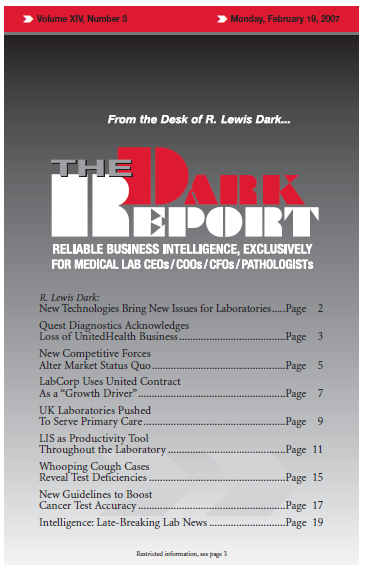CEO SUMMARY: Is the classic laboratory information system (LIS) morphing into a different information technology product? That’s the observation of one laboratory IT expert, who says that “best of breed” LIS products are becoming productivity tools that support improved clinical performance and give lab managers the comprehensive, real time information they need to closely manage […]
To access this post, you must purchase The Dark Report.


